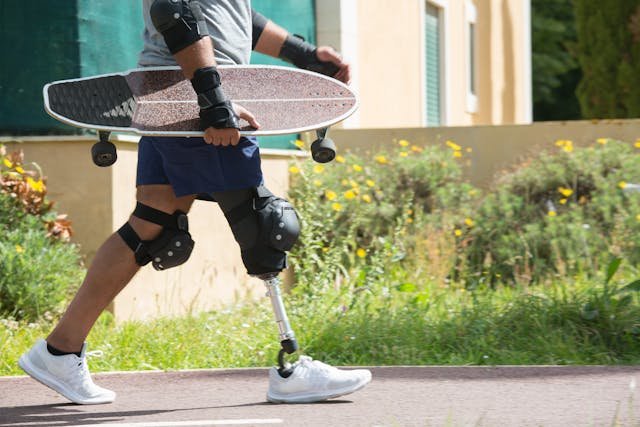Walking is something we often take for granted—until it’s no longer the same. For people with limb loss, walking becomes something that needs to be relearned. The way the body moves, balances, and steps changes based on the type of prosthetic used. Especially when comparing transtibial (below-knee) and transfemoral (above-knee) prosthetics, understanding how gait is affected can help users get better results from their prosthetics and rehabilitation.
In this article, we explore how each type of prosthetic influences the way a person walks, why certain movements feel easier or harder, and what can be done to improve gait. At Robobionics, our mission is not only to create high-quality prosthetic limbs but also to support users in achieving natural, confident movement.
The Basics of Human Gait
To understand how prosthetics affect walking, we must first understand how gait works in the human body.
What Happens When We Walk

Walking may look simple, but it involves a complex series of movements. When we walk, our brain sends signals to different muscles. These muscles help move the legs, keep us balanced, and push us forward. The hips, knees, and ankles all work together to create a rhythm that repeats with every step.
The gait cycle includes two main phases: the stance phase, where the foot is on the ground, and the swing phase, where the leg moves forward. Both phases need good coordination and strength. Even a small change in one joint can affect the whole pattern. That’s why prosthetics must work closely with the body’s natural movement.
Each joint—especially the knee—plays a key role. When the knee bends and straightens properly, walking feels smooth. But when the natural knee is replaced by an artificial one, the brain and body must adjust to a new way of moving.
Balance and Body Alignment
Gait isn’t just about stepping forward. It’s about staying upright and stable while moving. Good balance means the weight is evenly spread between both sides of the body. For someone with a prosthetic limb, keeping that balance becomes more challenging, especially if the knee joint is missing.
Transtibial users often keep better balance because their knee joint is still present. The body doesn’t need to compensate as much. With transfemoral prosthetics, the person must control a mechanical knee. This changes how the hips move, how the back supports the body, and how the arms help with balance.
Posture also matters. A strong core and upright position help maintain a straight and steady gait. Without it, the body might lean too much to one side, which can lead to discomfort or even long-term issues like back or hip pain.
Timing and Rhythm in Gait
The timing of each step—the rhythm of the gait—is important for smooth walking. A healthy gait has even timing. Each step is almost the same length and speed. But when someone starts using a prosthetic, this rhythm can be interrupted.
In transtibial prosthetics, because the knee is still functioning, the person can usually keep a regular walking rhythm. The leg swings forward naturally, and the timing between steps stays balanced. It might take some practice, but the rhythm returns fairly quickly.
With transfemoral prosthetics, timing takes longer to master. Controlling a prosthetic knee adds an extra step to think about. Users may pause before stepping or swing the leg outward to help it move forward. This can create a slower, less steady rhythm until the body adjusts.
Gait Differences with Transtibial Prosthetics
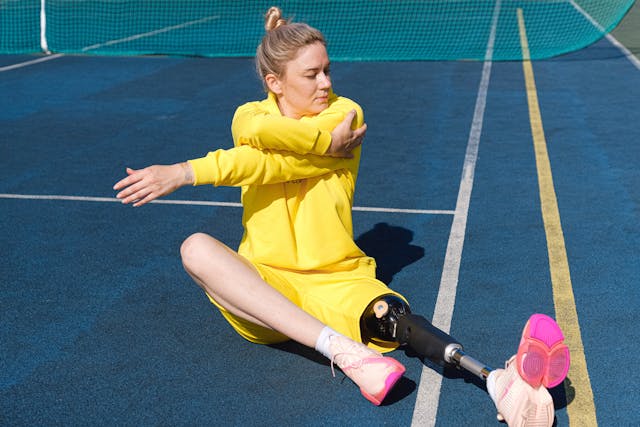
Transtibial prosthetics support a more natural walking pattern, but they still come with challenges that need attention during rehabilitation.
Preserved Knee Function and Gait
One of the main advantages of transtibial prosthetics is that the knee remains intact. This helps keep the walking pattern closer to what it was before amputation. The knee bends and straightens on its own, which makes each step feel more fluid and controlled.
Because of the preserved knee, users are able to control step length, speed, and weight transfer more easily. When the heel strikes the ground, the knee can absorb shock and prepare the foot for push-off. This makes transitions between steps smoother and more stable.
The ankle may be artificial, but if the prosthetic foot is well-designed, it works closely with the body’s natural motion. This helps restore gait symmetry, especially with the right training and adjustments.
Common Gait Patterns in Transtibial Users
Even though the knee works normally, there are still changes in gait for transtibial users. Often, the prosthetic side may take shorter or slower steps at first. This can be due to fear of putting full weight on the prosthetic or stiffness in the muscles.
Another pattern is “vaulting,” where the user pushes off with the sound leg to help the prosthetic foot clear the ground. This happens when the prosthetic feels too long or the person hasn’t learned how to swing the leg properly. Over time, with training, these habits can be corrected.
Rehabilitation focuses on building confidence, increasing strength, and improving coordination. Once users learn how to trust their prosthetic and shift their weight evenly, their walking becomes more efficient and natural.
Impact on Long-Term Movement
Transtibial prosthetics, when fitted properly and used with good technique, allow for long-term, pain-free walking. The user maintains better alignment in the spine, hips, and knees because the gait stays close to normal.
Still, it’s important to watch for issues like socket discomfort or misalignment. If not addressed, these can cause uneven weight distribution and lead to strain on the healthy leg. That’s why follow-up visits and adjustments are essential.
Over time, most transtibial users can walk confidently, with minimal differences between the prosthetic and sound side. With quality care, the prosthetic becomes a trusted tool for everyday movement.
Gait Differences with Transfemoral Prosthetics
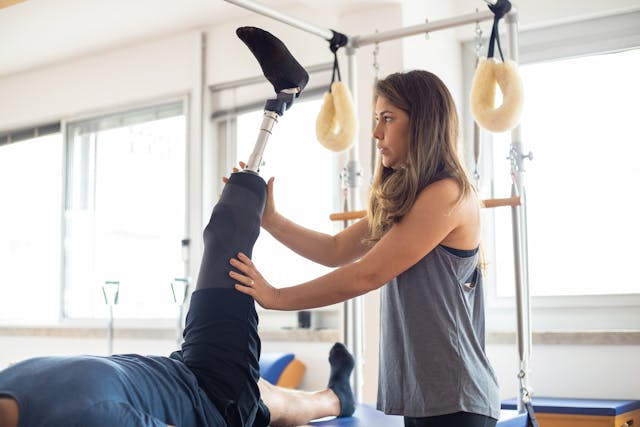
Transfemoral prosthetics replace both the knee and lower leg, which creates more noticeable changes in walking. These differences can be managed, but they require more learning and support.
Learning to Control a Prosthetic Knee
Without a natural knee, users must learn how to move with a mechanical or microprocessor knee. The challenge is that the knee does not bend or extend on its own. The user must move their hip in a way that makes the prosthetic leg swing forward correctly.
This makes the swing phase more complicated. Beginners often swing their leg outward in a wide arc to avoid tripping. This side-to-side motion is not efficient and can cause other parts of the body to work harder to keep balance.
With practice, users learn to walk in a straight line and time their steps better. Advanced prosthetic knees adjust to different speeds and angles, which helps, but the user still needs to develop strong coordination to use the knee safely.
Hip Compensation and Postural Adjustments
Because the knee is missing, the hips must work harder. The user uses their hip muscles to lift and move the prosthetic leg forward. This creates extra motion in the pelvis and lower back, which can lead to fatigue or discomfort.
Many transfemoral users lean backward slightly when standing or walking. This is called “posterior trunk lean,” and it’s the body’s way of stabilizing the prosthetic. While it helps prevent falls, it can also cause long-term posture problems if not corrected.
Gait training includes exercises to strengthen the hips and improve posture. Teaching the user how to control the prosthetic knee while keeping the upper body aligned is key to achieving a smoother and more natural gait.
Variations in Step Length and Stride
Another major difference is the length of each step. In transfemoral gait, users may take shorter steps with the prosthetic side. This makes the walk slower and sometimes uneven. It takes more energy to walk this way, which can be tiring over time.
Stride length also depends on confidence. As users get better at controlling the knee and foot, their stride becomes longer and more equal between both sides. Using a walking aid like a cane in early stages helps until the user develops full trust in their prosthetic.
The goal is to achieve as much symmetry as possible. While the movement will always be slightly different from natural gait, with time and the right training, transfemoral users can walk steadily and comfortably.
Improving Gait Through Technology and Training
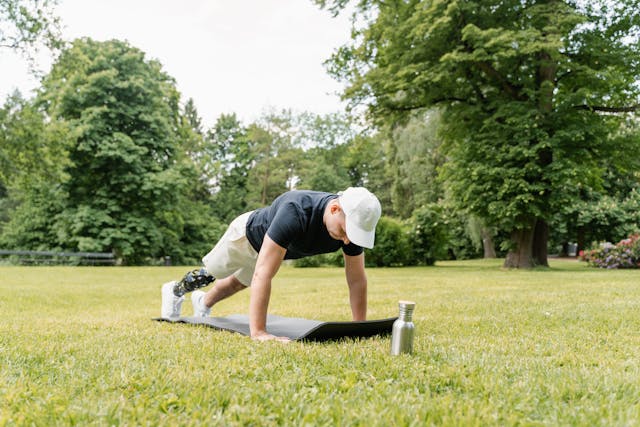
Walking well with a prosthetic is not only about the device—it’s also about how the body adapts and learns new patterns.
The Role of Advanced Prosthetic Components
Prosthetic components play a huge role in gait quality. For transtibial users, a responsive foot that mimics ankle movement can make walking much easier. For transfemoral users, a smart knee that adapts to speed and terrain can transform mobility.
Microprocessor knees are especially helpful for transfemoral users. They automatically adjust to the walking pace, provide resistance during the stance phase, and allow smoother knee bending when sitting or climbing stairs. These features reduce the mental effort needed to walk, which helps improve rhythm and balance.
Good prosthetic design also includes a socket that fits comfortably. When the socket holds the residual limb securely without causing pressure, the user can walk with more confidence and less pain.
Importance of Gait Training and Physical Therapy
Even the best prosthetic won’t deliver good results without proper training. Gait training helps the user learn how to move in a way that feels balanced and efficient. Therapists teach techniques for weight shifting, foot placement, and body alignment.
Early training often includes walking on flat surfaces, using mirrors for visual feedback, and practicing step timing. Over time, the training moves to more complex tasks like turning, climbing stairs, or walking on uneven ground.
Physical therapy also helps strengthen key muscles, especially the core, hips, and back. This strength supports better posture and reduces compensation habits that can lead to injury.
Regular Adjustments and Continued Progress
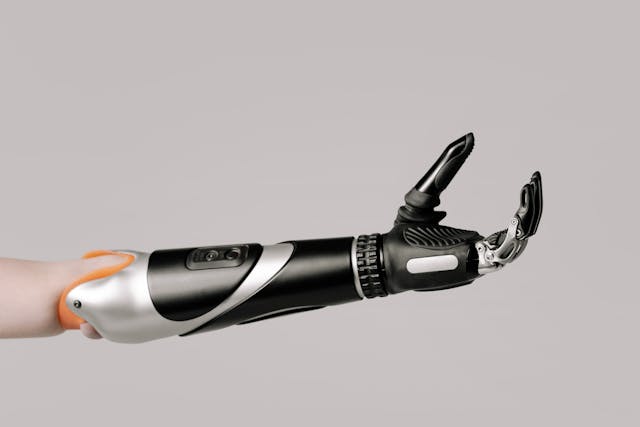
Walking changes as the body heals, grows stronger, or adapts to new routines. That’s why ongoing adjustments are important. The socket might need to be reshaped, or the foot and knee components might need realignment.
Regular follow-ups allow prosthetists to fine-tune the prosthetic so that gait stays smooth. Small changes in angle or pressure can make a big difference in how each step feels.
At Robobionics, we encourage all users to schedule routine check-ins and take advantage of our gamified home rehabilitation programs. These tools make learning fun and help users stay active in their recovery.
How Robobionics Supports Natural Gait Recovery
Regaining a natural gait after limb loss doesn’t happen overnight. It takes the right prosthetic, the right training, and the right team. At Robobionics, we combine advanced technology with deep care and human understanding to make this journey smoother and more empowering for every user.
Personalized Prosthetic Design for Real-Life Movement
No two limbs are the same, and that means no two prosthetics should be either. At Robobionics, we begin every journey with a detailed evaluation. We don’t just look at limb length or muscle strength—we listen to how you live your life. Whether you’re active, prefer stability, or are just starting out, your prosthetic is designed to match your pace, your strength, and your goals.
For transtibial users, we focus on precision socket design and lightweight, energy-return feet that support fluid movement. For transfemoral users, we fit advanced microprocessor knees that adapt to your walking style, helping you walk with confidence, even on stairs or slopes. Every part is chosen with your comfort and gait in mind.
Each Robobionics prosthetic is made in India with world-class quality and local care. That means faster service, better support, and a truly personalized experience, right from the first step to the final fit.
Gamified Rehabilitation to Improve Gait Naturally
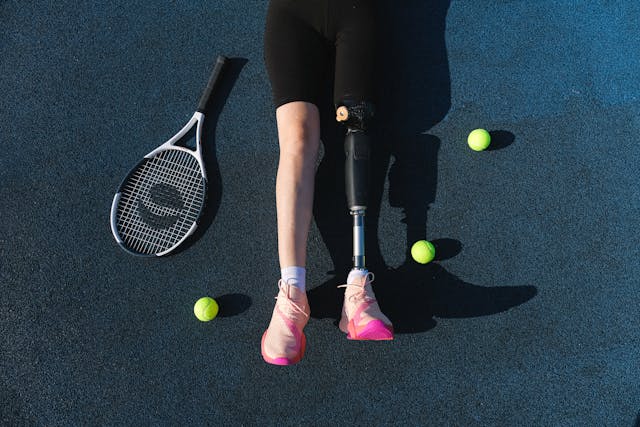
Rehabilitation doesn’t have to be dull or overwhelming. We believe that learning to walk again should be motivating and even fun. That’s why Robobionics offers gamified home-based rehab programs that guide you through daily training in a way that’s easy to follow and engaging.
Our programs are designed to help users of both transtibial and transfemoral prosthetics practice real-life movements—from taking steps and climbing stairs to turning and shifting weight. You get real-time feedback and visual progress, which helps build confidence and form better habits.
The more users practice, the more natural their gait becomes. With the support of our team and these digital tools, you don’t have to wait until your next clinic visit to improve. Every day becomes a chance to move better, feel stronger, and take another step toward full mobility.
Ongoing Support and Lifelong Partnership
We don’t stop supporting you once your prosthetic is fitted. At Robobionics, we see ourselves as lifelong partners in your mobility journey. We offer regular follow-ups, maintenance, and re-adjustments because we know your needs will evolve. As your goals change—whether you want to walk longer, move faster, or become more active—we’re here to help you upgrade and adapt.
Our expert team is available for everything from comfort checks to advanced training. And thanks to our local manufacturing and service network, you won’t have to wait weeks for replacements or repairs. Your care is nearby, reliable, and fast.
Mobility is not a one-time event. It’s a continuous journey—and with Robobionics by your side, every step is supported with care, science, and innovation.
Final Thoughts on Gait and Prosthetics
Gait is more than just walking—it’s how the body expresses motion, balance, and independence. Whether someone uses a transtibial or transfemoral prosthetic, the goal is the same: to walk with confidence and comfort.
Each type of prosthetic affects gait in different ways. Transtibial users benefit from a more natural rhythm due to the preserved knee. Transfemoral users face more challenges but can still achieve excellent mobility with the right knee technology and training.
At Robobionics, we’re committed to helping every user walk better. From advanced prosthetic design to personalized rehabilitation support, we walk with you—every step of the way.
Book a free demo with Robobionics today and take the first step toward restoring your natural, confident gait.



